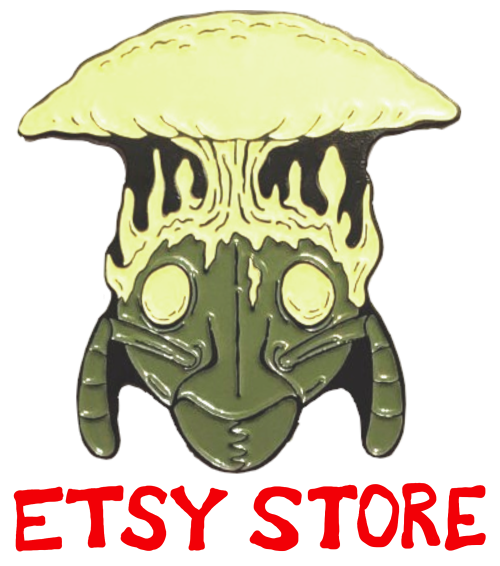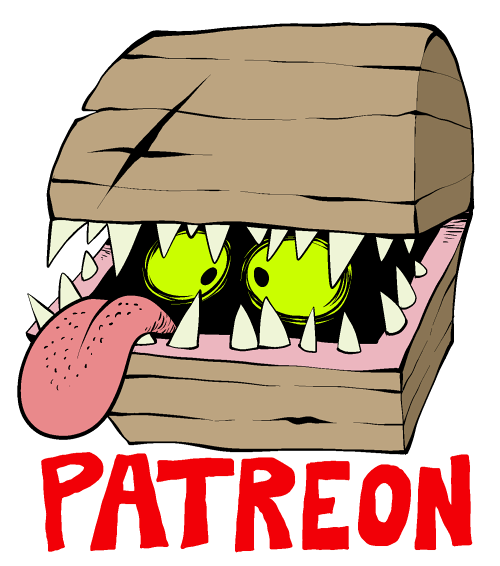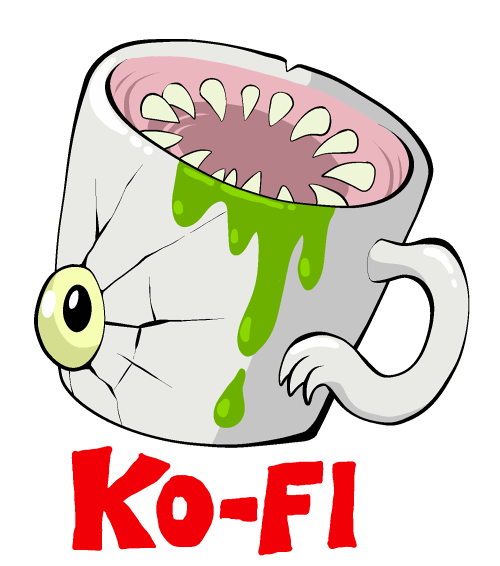
By Jonathan Wojcik
ENTRY 31: ANA & BRUNO
How can we ever really follow up the previous thirty entries? With the "weirdest" entity of them all? One from the "scariest" movie that qualified? The newest? The oldest? The overall best in quality? Most of these are highly subjective and none of them feel surprising enough to be interesting.
But whatever you think of today's entry, I think you'll agree that it's something awfully special. I personally consider it a
fantastic story, even if it's rough around the edges. It is characterized as a horror film by its director, and I agree that it fits the bill. We've seen its kind of "monsters" before over the past few entries, but I think it does something marvelously unique with its tropes.
It has one of the darkest, most shocking plot twists of any movie we've reviewed this month.
It is an independently produced CG animated children's film from Mexico.
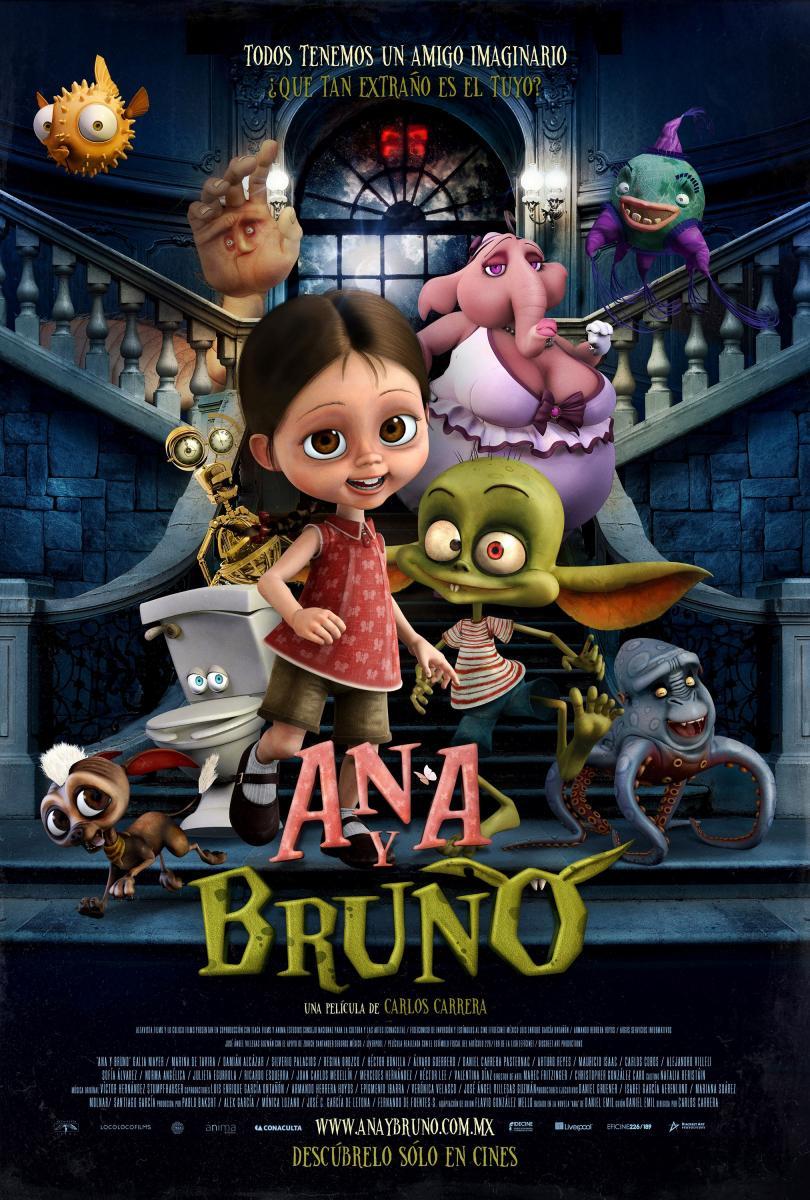
!!!PLEASE CONSIDER FINDING AND WATCHING THIS MOVIE UNSPOILED IF YOU POSSIBLY CAN!!!
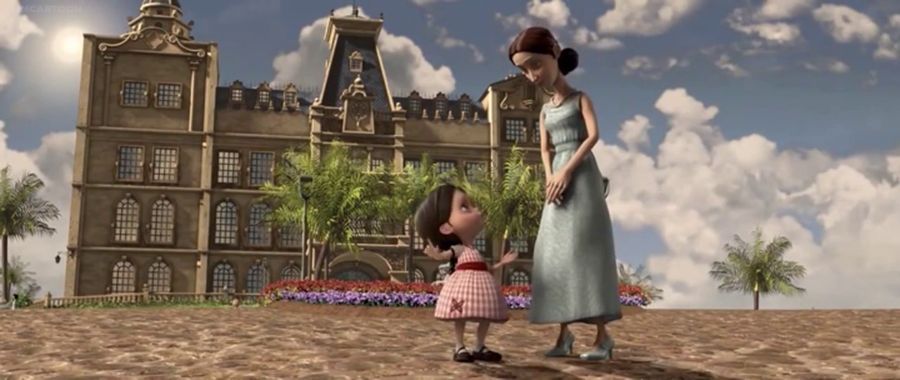
Written by Flavio Gonzales Mello and Daniel Emil, directed by Carlos Carrera,
Ana & Bruno is the story of a little girl named Ana (Galia Mayer) and her mother, Carmen (Marina de Tavira) who are both commited to a psychiatric asylum, and as this takes place some time in the 1940's, it's the kind of asylum we still like to make scary movies about, but we all know the
patients weren't what really made these places into a horror show...and this movie is all too aware of that. Already this is a more intense premise than you would expect from a kid's movie, but we haven't even scratched the surface yet.
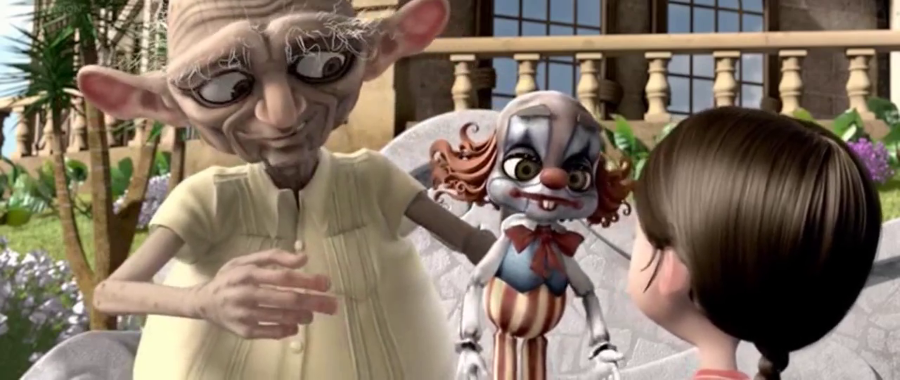
On her first day at the "hospital," Ana meets one of her fellow patients, a kind but schizophrenic old man with a ventriloquist dummy named Giggles. Giggles is a harmless but mildly disquieting little clown that insists he's the one controlling his "puppeteer" as much as the reverse..
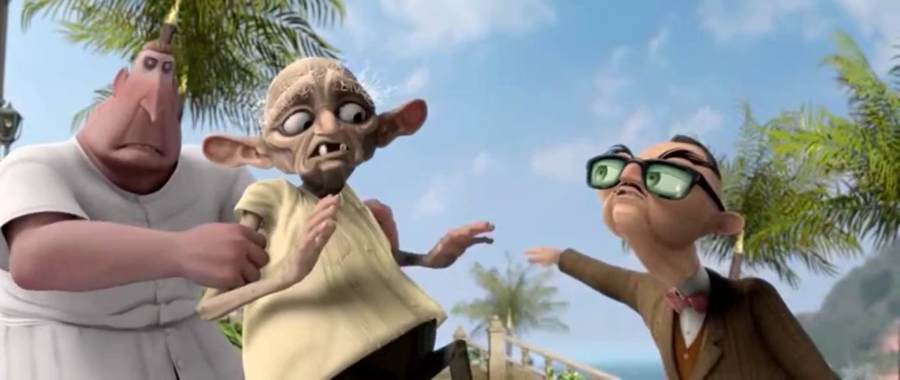
Though he wasn't hurting anyone, the hospital's director arrives with a couple of big, brutish staff to restrain the old man, and they drag him away kicking and screaming as the "puppet" tumbles to the ground...only to continue moving and speaking of its own accord. Only Ana seems to notice as the terrified little clown hides beneath a bench and panics, genuinely worried about the "treatment" they intend to give his master.
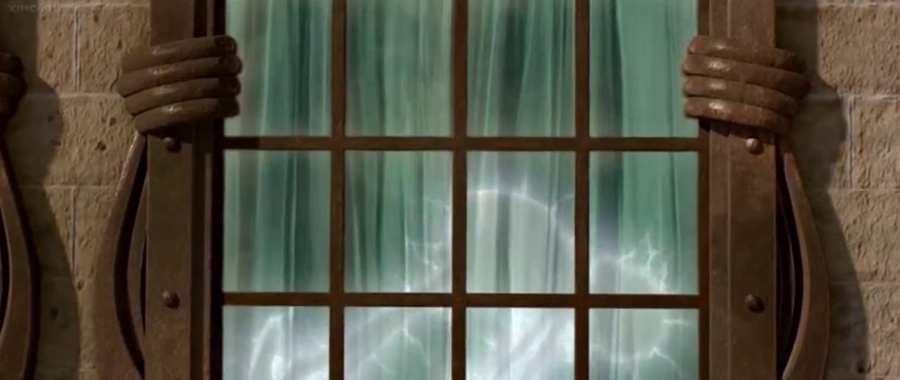
Hospital staff pull the curtains closed, but we still get a glimpse of them strapping down the poor old man, and through the curtain we can see his body
lighting up with electricity. As the man is subjected to a cruel, experimental electrical therapy nothing like we use today (or ever did), Giggles convulses along with him...and "dies," vanishing instantly in a puff of smoke.
For an "off-brand" CG kid's movie, we know within minutes that
Ana & Bruno pulls absolutely no punches.
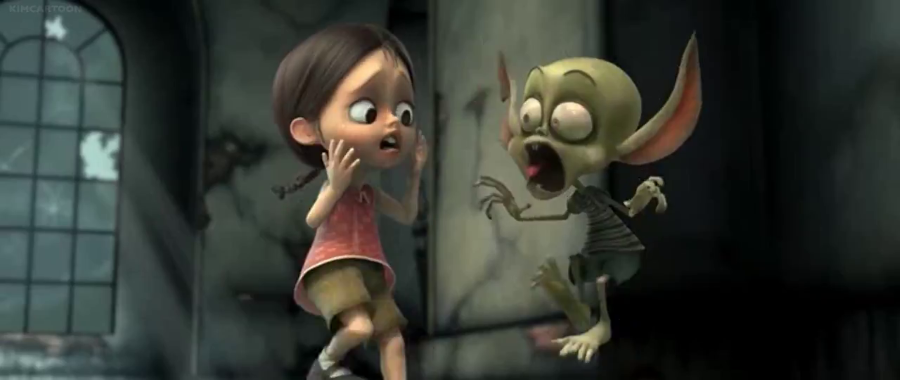
That night, as her mother sleeps, Ana sneaks out of their room, and runs afoul of a little green goblin-like creature, Bruno (Armando Urtusuaztegui). After both realize that the other means them no harm, Bruno takes her on a little tour of his "home." He introduces himself as a "hallucination" or "figment" (depending on the translation,) and explains that his kind are visible only to certain special people, animals, and infants. Bruno is the figment of another elderly patient, who lives in constant fear of the "little green man." Bruno doesn't mean him any harm, but spooking his creator is simply his reason for existing; he can't help himself.
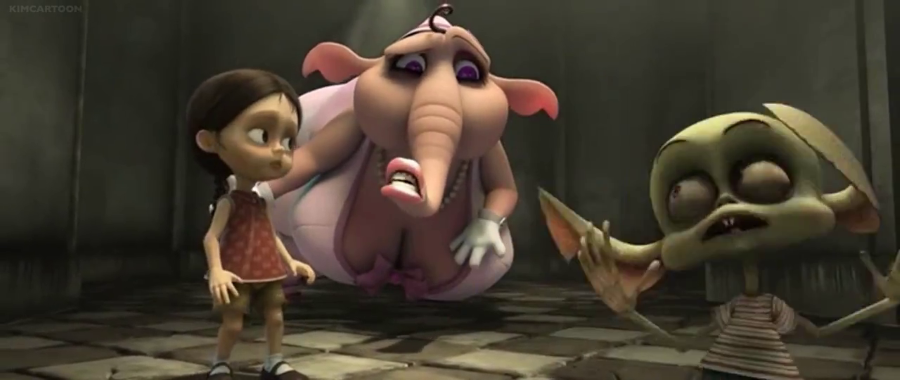
We meet another Figment, Rosie (Regina Orozco) who takes the form of a huge, pink elephant woman with her mouth on the end of her trunk, who has an unrequited not-secret crush on the disinterested Bruno. She's the figment of a lonely woman with a severe fear of abandonment, driving Rosie to be easily infatuated and extremely jealous. This also demonstrates that the figments don't exclusively represent audio-visual hallucinations; they can be the avatars of any conceivable mental illnesses.
Rosie, of course, is immediately hostile towards Ana, who she sees as competition, and will be sort of side-antagonist throughout the film...but is she that bad? You'll see!
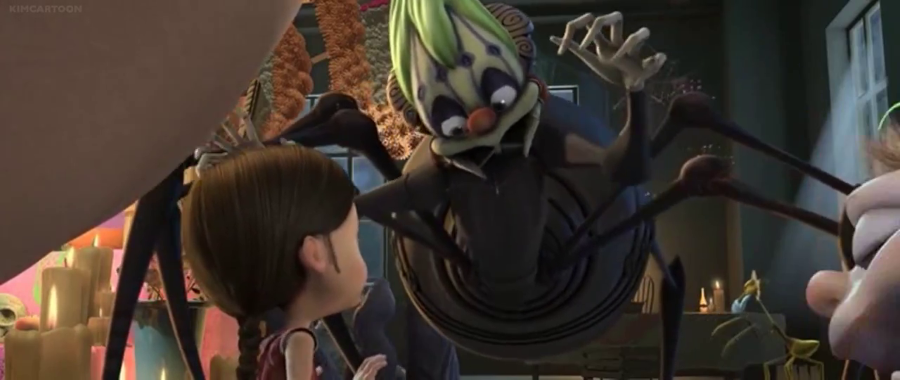
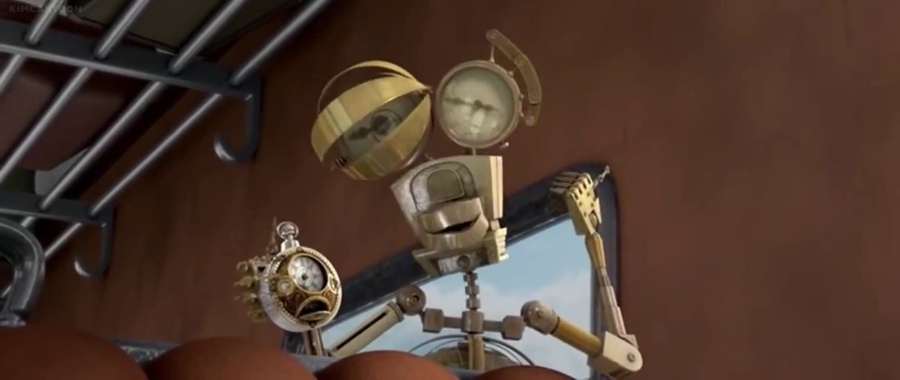
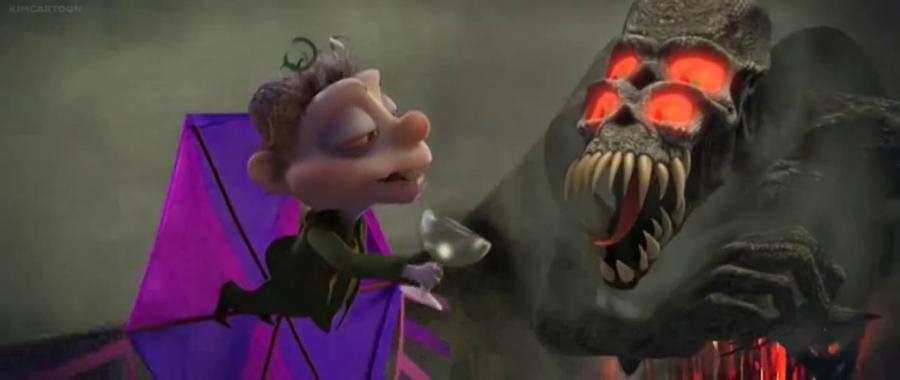
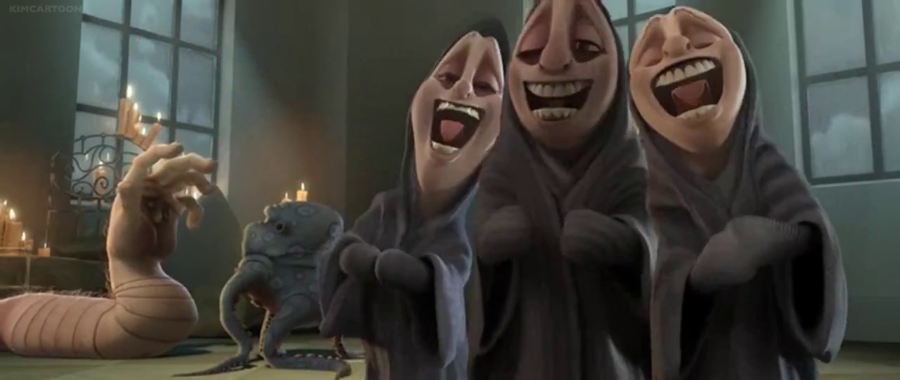
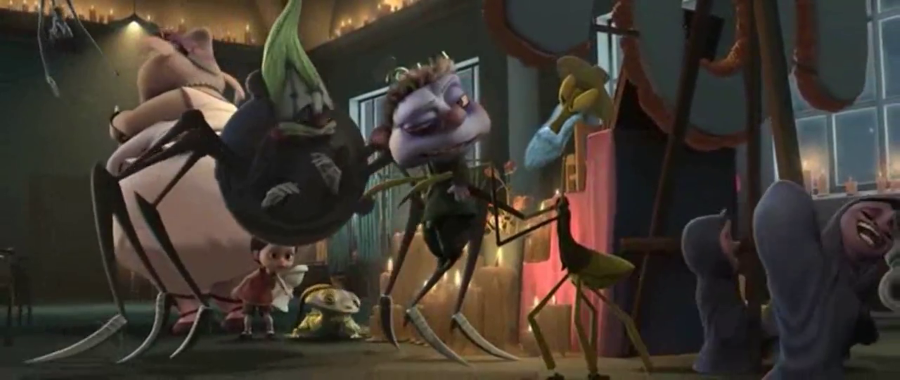
Bruno and Rosie lead Ana to a gathering of many other figments; just a few of them include a clockwork figure representing chronomania (an obsession with the passage of time) named
Tick, a kind but ferocious looking clown-spider hybrid named
Black Widow and tied to someone riddled with phobias (From Derry, Maine?), three cackling nun-like sisters representing one man's paranoia of mockery, a bearded preying mantis manifests from a delusion of insect infestations, a weird little man who's perpetually drunk and actively in love with Rosie, and
Leftie, a giant worm-like hairy arm with a face in his palm, whose origin is glossed over by Bruno in a "you don't want to know" kind of way, which kind of tells us all we need to know anyway.
There are at least a couple dozen others, from a comical talking toilet to a frighteningly ghastly-pale and emaciated figure that walks upside-down from the ceiling. Each symbolizes a different issue that has landed someone in the ward, but none are malevolent beings. In fact, they're are gathered to honor the passing of Giggles the clown; though he caused a lot of trouble for his "master," the hospital's harsh treatments have done worse for him than his original illness, leaving him dazed, submissive and more fearful than ever. If you're worried that this movie is going to demonize the idea of receiving
proper psychiatric treatment, however, just bear with me.
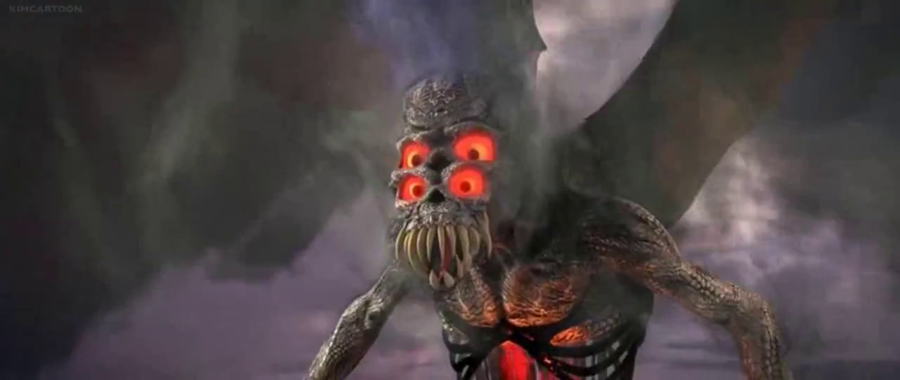
The figments have a grand party in their friend's memory...until it is crashed (literally, through a glass window) by an uninvited guest; a demonic, bat-winged entity with multiple glowing red eyes and long, protruding teeth that constantly billows black smoke from its entire body, cloaked wherever it goes in a cloud of soot.
This figment is the very reason Ana and her Mother are here: they are the only two people who can see the ashen gargoyle, which is hell-bent on coming after Ana.
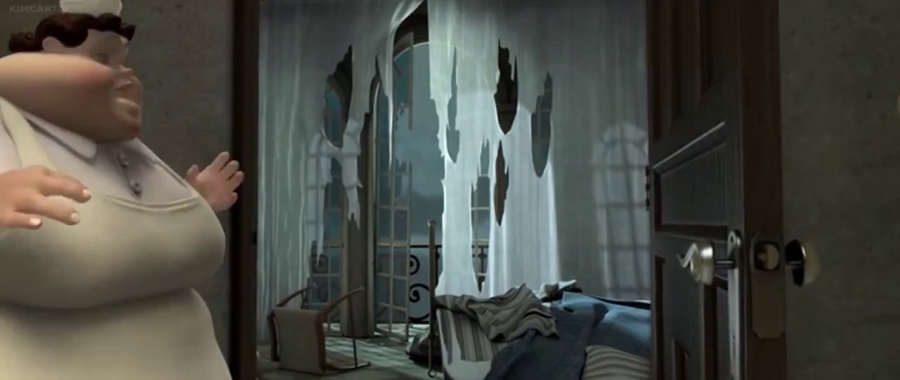
Ana flees back to her mother, but the monster follows, and once her mother has fought it off, it only looks to staff as though the women tore their room apart, and she is roughly taken to a padded cell, separated from her daughter who is only shoo'd away by one of the grouchy nurses. With adults out of sight, the monster turns its attention on Ana, and it's up to the friendlier figments to hold it back as she flees the hospital.
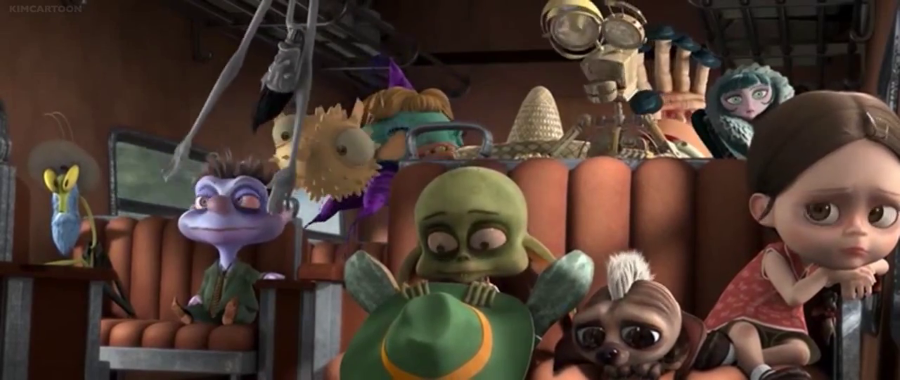
Ana is certain that if her father only knew what was going on, he would get her and and her mother out of that horrible place, but she doesn't know how she can get back to him all on her own. Fortunately, the figments
are visible to animals, and by hypnotizing a few cows, they manage to stop a train long enough for Ana to sneak on board. Bruno decides to tag along with her, so Rosie invites herself along as well, and most of the others follow.
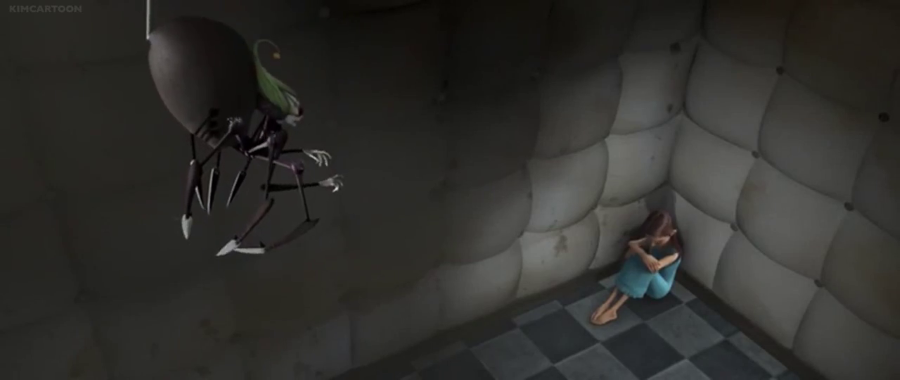
Only Black Widow stays behind, shrinking to the size of a normal spider to keep an eye on Carmen, and even cheers her up by spinning a web that looks like Ana's face!
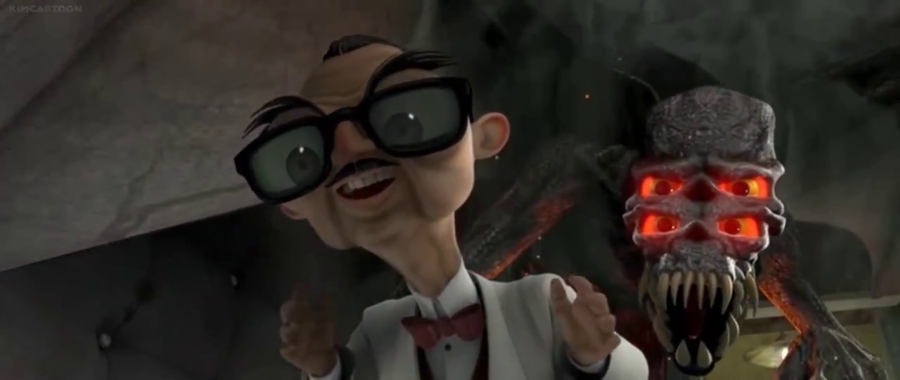
Unfortunately, the metaphysical arachnoid can only do so much to protect Carmen from the smoldering demon, and nothing at all to protect her from the even more dangerous, more human monster who runs the abusive facility.
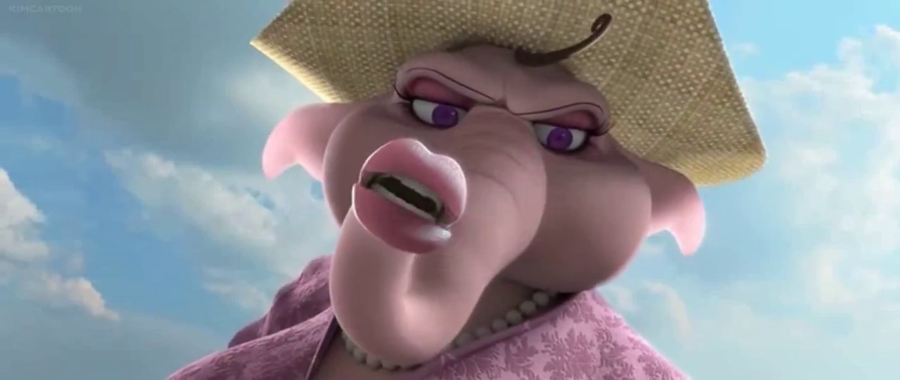
There's some brief drama when the group realizes they're on the wrong train, and have to leap from theirs to the correct one, during which Rosie times her jump specifically to shake the train and nearly knock Ana to her death! She plays innocent, but it's only the first of two or three times she'll actually attempt to off the little girl. How funny is it that someone else's mental illness is trying to murder you
entirely because it has the hots for another different person's mental illness? It's just...a really weird situation. I'm glad there's ever been a movie in which this was one of the problems.
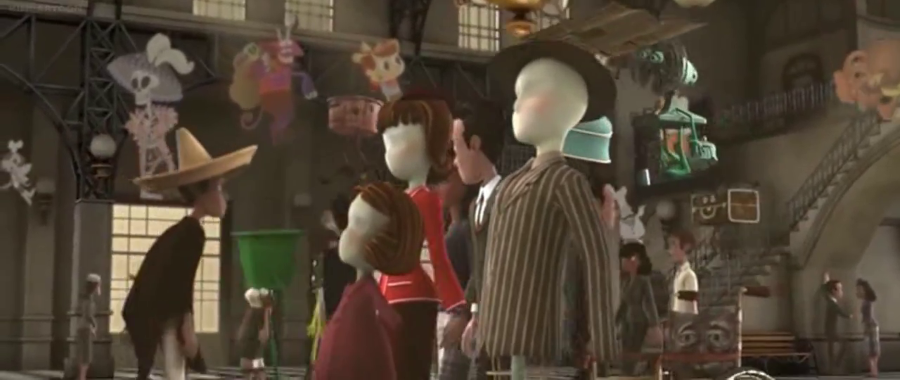
There's a wonderfully poignant moment in this film when Ana and her imaginary pals arrive at the city train station; it's bustling with people and equally bustling
with figments. "Most" people have them, even if they don't realize it. Whether it's a trauma, an addiction, depression, anxiety, an emotional imbalance or an irrational fear, it is perfectly normal to suffer from mental disorder of some form, on some level.
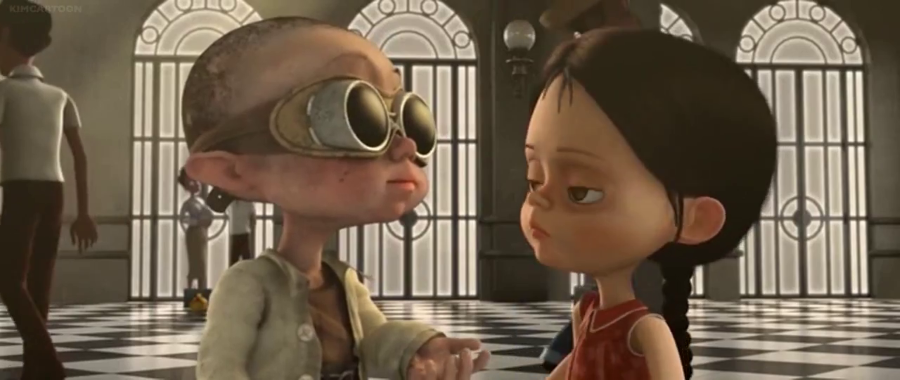
At the station, Ana bumps into a little boy her own age named Daniel, (Damian Alcazar) a blind orphan who lives off panhandling. Ana discovers he can hear and feel the figments, who pretend to be her human friends. Despite his disability, Daniel knows the city extremely well and believes he can help her navigate back to her home.
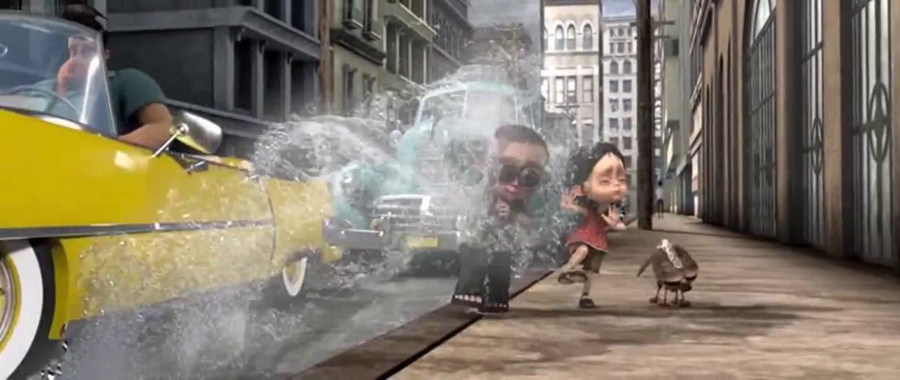
In another meaningful scene, a rich hotshot splashes Daniel with his car as he stops for lunch, and the disabled, homeless child ends up roughly echoing Bruno's introduction to "figments" by being
effectively invisible to most of society; that only some can truly see them.
Daniel then steals that guy's car. Ha ha ha ha.
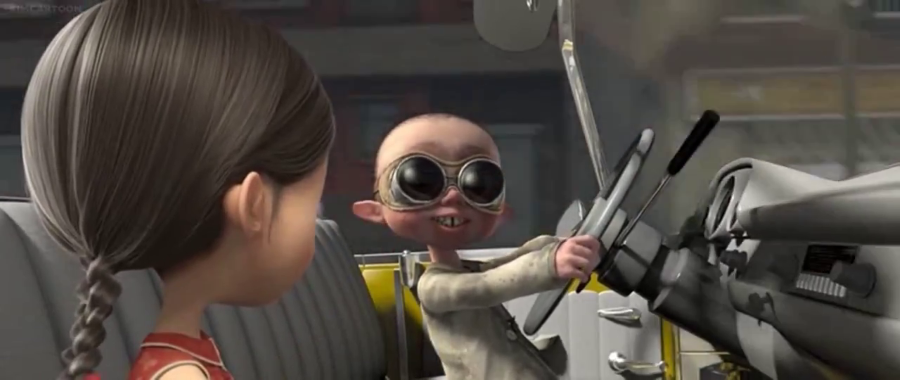
...And no, they do not give him a mystical "sixth sense" that allows him to drive. He just has fearless child confidence that he's good at it, actually only surviving because everyone else on the road manages to get out of his way.
The two eventually make it to the street where Ana's father works, and she even sees him heading towards her excitedly, with a bouqet of flowers...
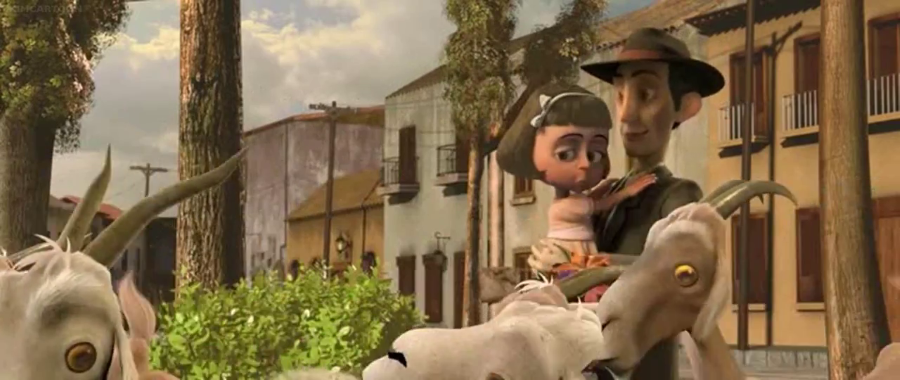
...Only to sweep up an
entirely different little girl in his arms.
EXTREME SPOILER WARNING: YOUR LAST CHANCE TO GO WATCH THIS MOVIE WHEREVER YOU MIGHT FIND IT. TRY "ANA Y BRUNO" ON KIM CARTOON OR SOMETHING. ANYTHING.
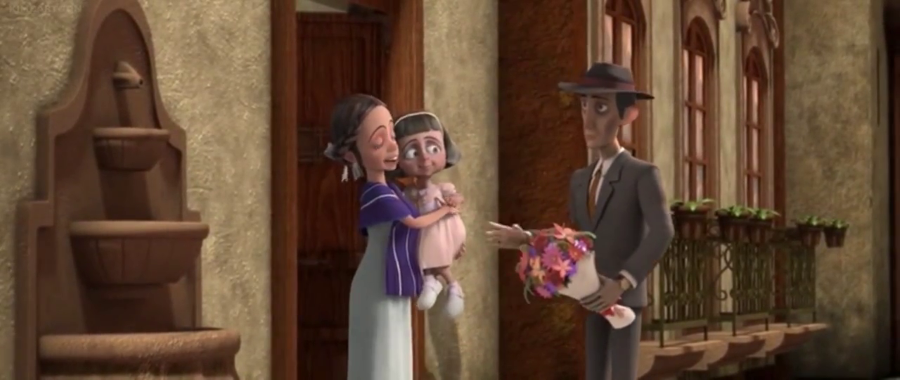
Ana, Daniel and Bruno follow after him, and spy him bringing the girl back to another home, where there's another woman. As near as she can tell, a double life with a second family.
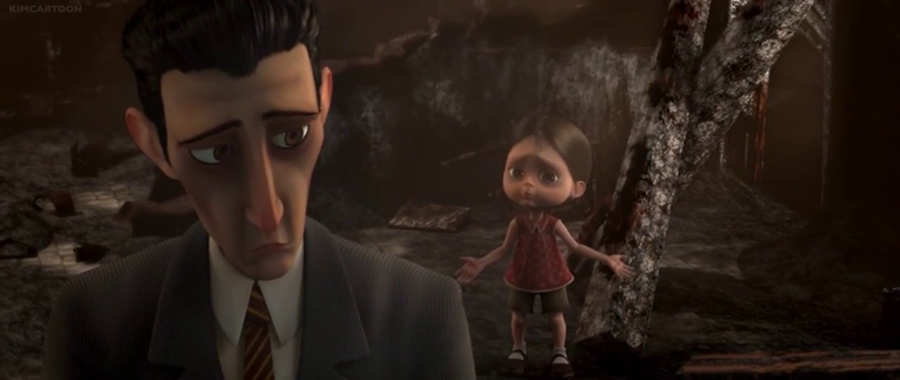
Ana follows her father to a burned-down building, where he lays the bouqet, and she at last confronts him. He won't even look her in the eyes as he apologizes for not being strong enough to stay with her mother, as much as he still loves them both. She continues to argue with him and he continues to apologize, but won't explain himself further, and finally just bids her goodbye before walking away.
And then...
...Ana sees where her father had laid the bouqet.
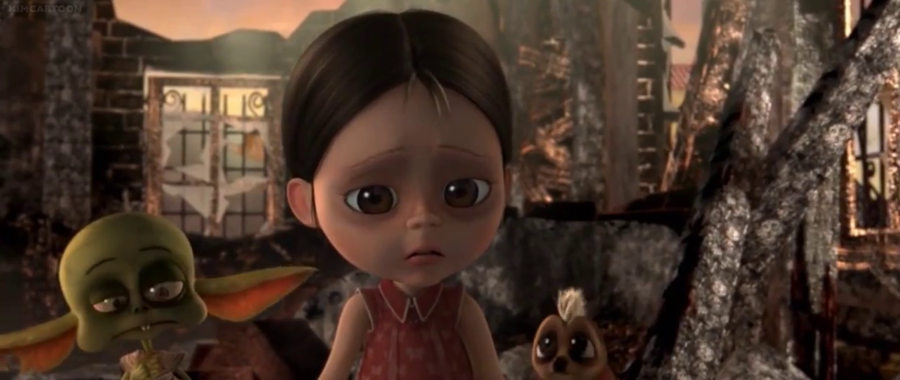
Maybe you saw the twist coming a mile away, but maybe, like many during their first experience with this movie, you really didn't think they would go there. Not a movie that's still being billed for actual children to watch, right? Not with a tiny little child protagonist they play up as this cute, sweet and pathetic,
right???
But no. Ana's father wasn't even speaking to her at all. He was speaking his final goodbyes to a
memorial.
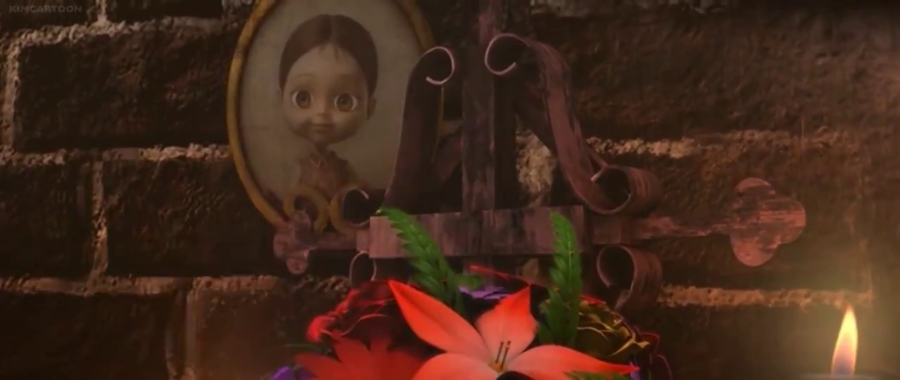
...A memorial to the original, real Ana. "Our" Ana, the one we've been following, is a delusion concocted by her mother's mind to cope with her death, while the burning demon represents the house fire that claimed the little girl's life. While Carmen suppresses the memory of the event, she is forced to re-live the trauma as she perceives the "demon" taking "Ana" away from her again and again.
In literally the only revelation that could possibly be any harder-hitting at this point, Ana realizes that she and the demon are symptoms of the same illness, and her mother can never be free until both of them are gone.
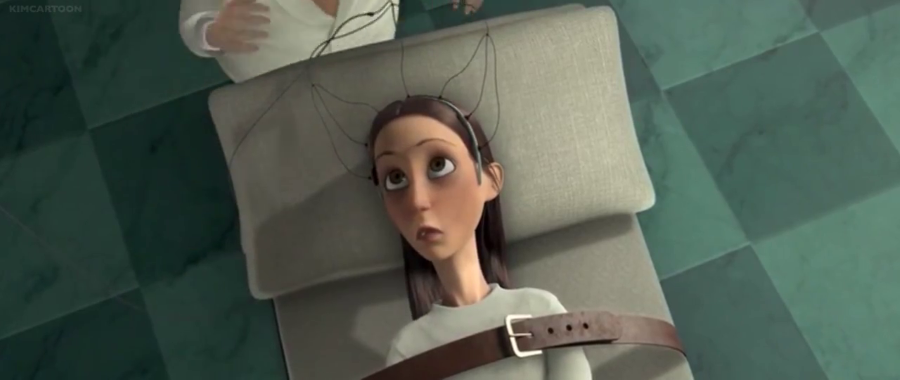
As we're all still processing this, we return to the asylum, where the head doctor prepares to subject Carmen to her first round of electroshock, which is even worse than we thought it was: it's his own experimental innovation, not just a series of minor shocks to condition a patient's behavior, but a powerful current that
permanently alters the brain...an electrical method of lobotomization.
Mustering her every ounce of "strength," Black Widow is able to interact with just a single, tiny drop of water to short out the machine in the nick of time, one of the only instances in which a figment unambiguously manages to interact with physical matter.
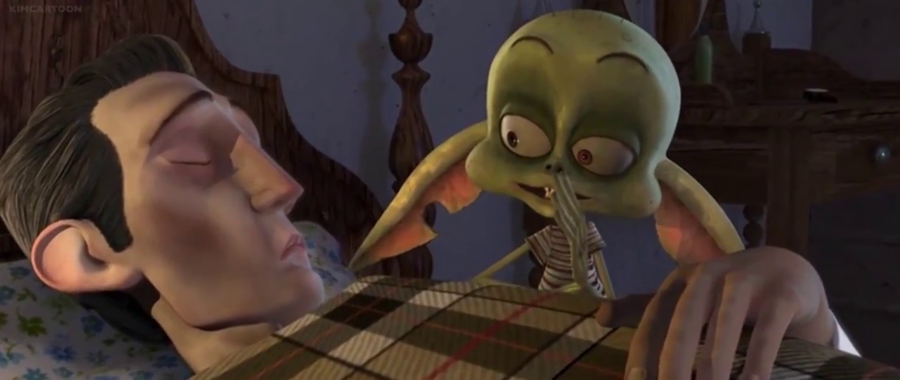
Now that Ana knows she's a figment, she is able to pass right through closed doors and follow her father back to the room he's been renting, where they find him asleep and dreaming. This is, of course, a state in which everyone is at their most vulnerable to figments. With the help of the loud, obnoxious Bruno, Ana just manages to push an idea through the man's subconscious that his wife desperately needs him.
Ana intends to hitch a ride in his car to get back to the clinic, but Rosie trips her at the last minute, causing Bruno to completely snap and tell her off. Daniel shows up having stolen a motor scooter and gives Ana a lift, but when they're unable to catch up to her father, he gets her back onto the train.
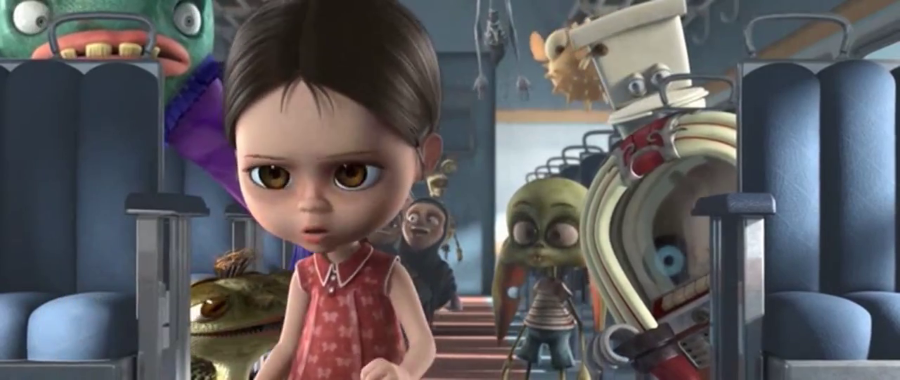
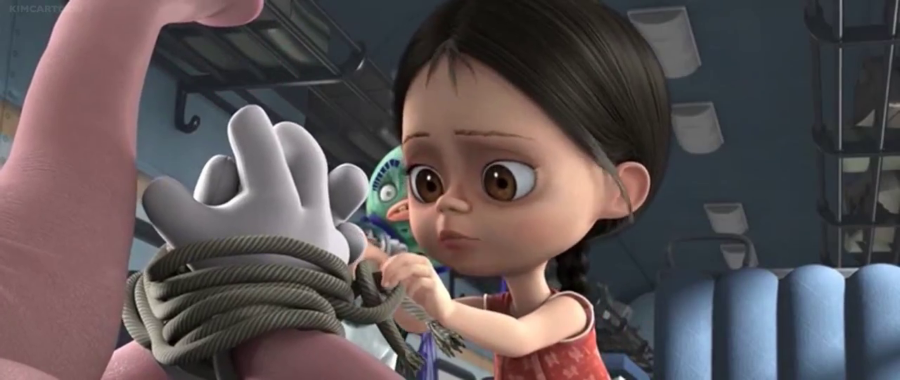
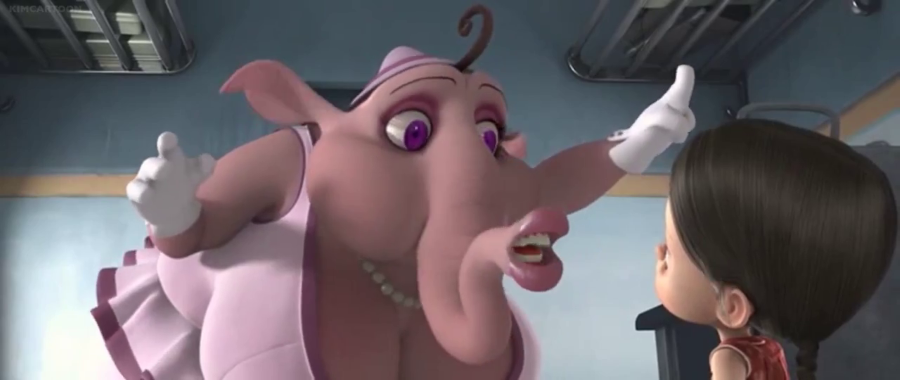
There, Ana finds the Figments again, and yeah, it's a little confusing as to what just happened and why Ana didn't just board the train with them to begin with. She discovers that they've tied up Rosie as punishment for repeatedly trying to kill her, but she ends up freeing the weird elephant (tapir? Aardvark?) and actually admonishing Bruno for always treating her so coldly. She tells Rosie that she deserves someone who really cares about her, convincing her to give up on the screeching green goblin, and it's a charming moment all around when they hit it off as friends and Rosie begins training Ana to use her figment "powers," such as teleportation.
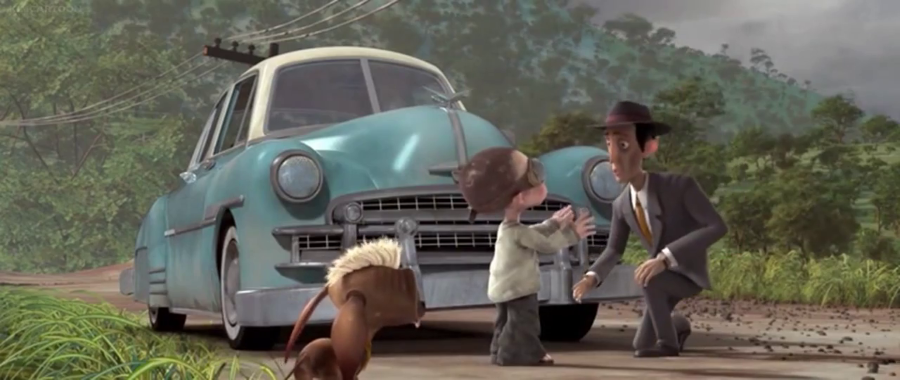
Meanwhile, Ana's father somehow crosses paths with Daniel - nearly hitting him with his car - and is shocked when the blind boy mentions Ana. This is our first confirmation that Daniel himself is a real child after that last narrative atom bomb they dropped on us, but if Daniel is real and Ana isn't, then we also have our ultimate confirmation that figments are at least
quasi-real.
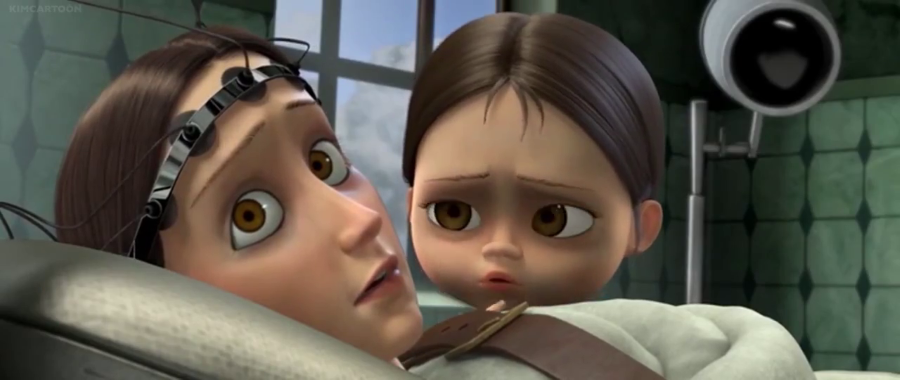
Having stolen some kites from the train, the Figments manage to fly back to the Asylum, and Carmen is thrilled to see "Ana" safe and sound, but it only reaffirms the doctor's decision to give her the juice. In another heartbreaking scene, Ana pleads with her mother that she has to stop talking to her, that she isn't real, that her presence is only hurting her and that she has to go.
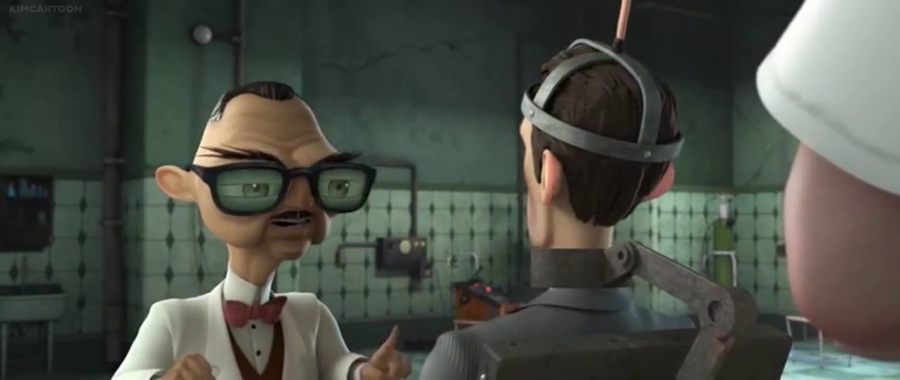
Ana's father then arrived, but far from saving the day, his belligerence towards the staff convinces the doctor to hook him up to the same machine to calm him down. At least it buys everyone more time, though?
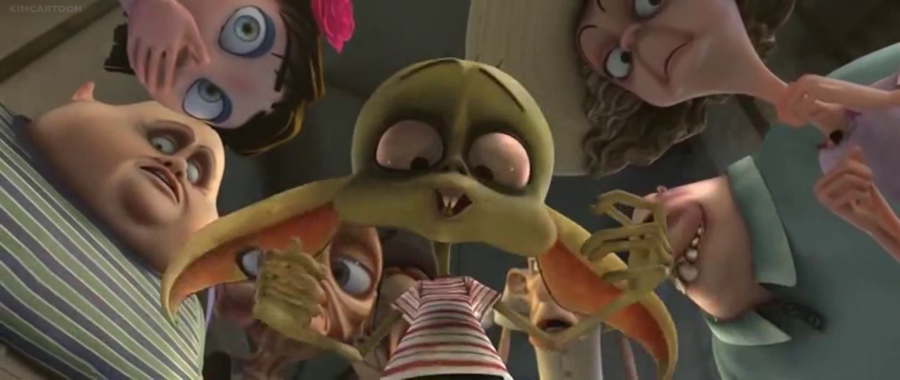
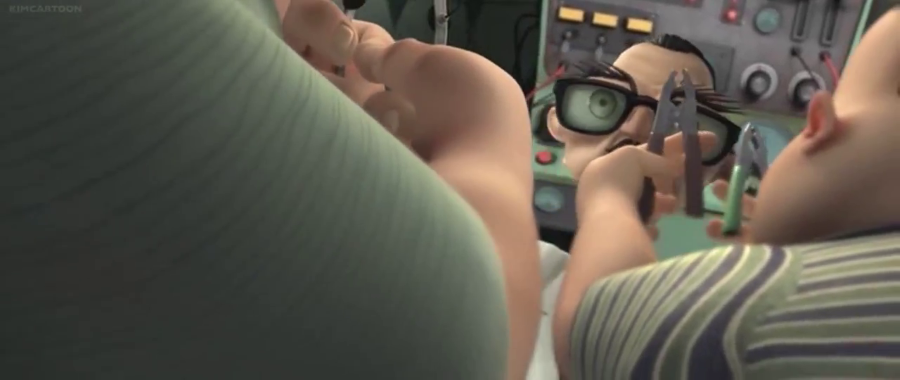
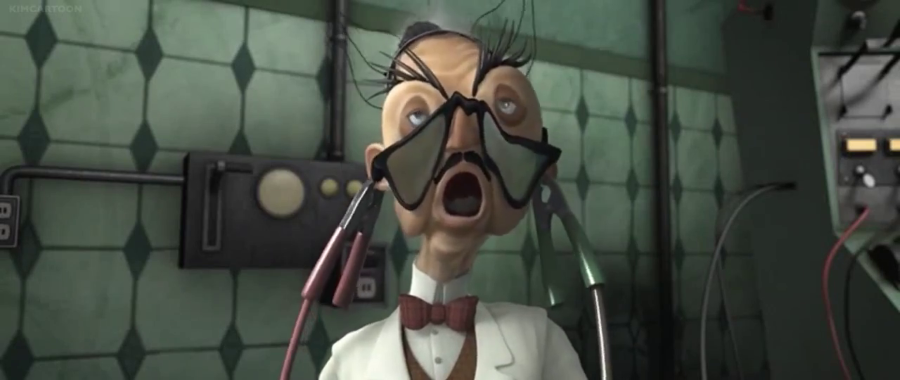
Bruno and the others can't help directly, but use their most powerful asset, their connection to their own creators, and rally them at last to rebel against the asylum staff. In one last (literally) shocking twist, they connect the head doctor to the lobotomizer at full power...and as his brain is fried with hundreds of volts,
half of his OWN STAFF dematerialize. Thats why some of them could interact with Ana in earlier scenes!
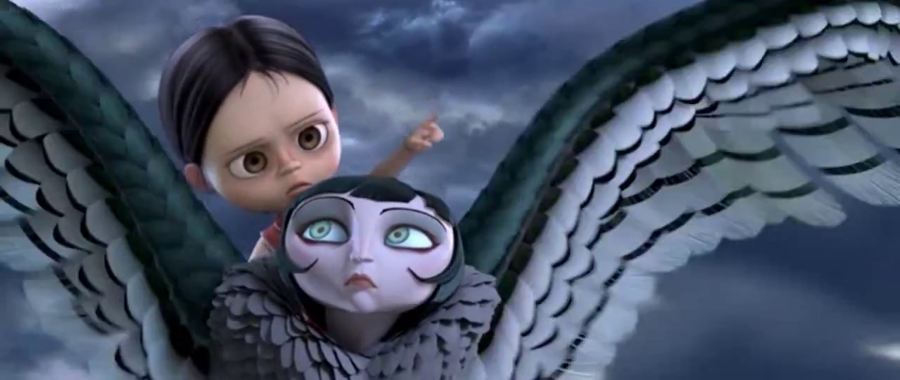
Ana rides one of the flying figments, a kickass harpy woman we were never properly introduced to, to have a sort of aerial dogfight with her evil counterpart and draw the monster away from her family, assisted all the while by the other imaginary creatures - even Rosie!

The little drunk guy even does the first useful (and actually funny) thing in the whole movie, when he drunkenly talks to the monster's ear off about how much he loves Rosie and will even give up drinking to be with her. The demon is just so perplexed, it keeps listening awkwardly until the rant is finally over. What else do you do in that situation, anyway?!
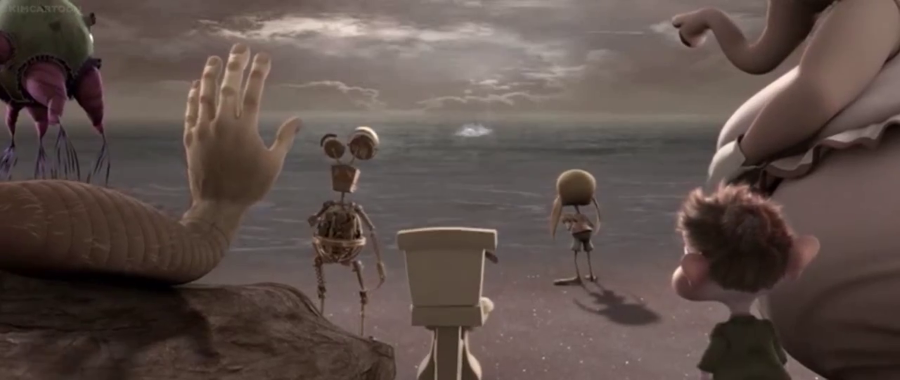
Finally, Ana flies out over the ocean, the demon in pursuit at full speed, and she leaps off her harpy friend at just the right moment. Both Ana and the monster plunge into the water as her mother (theirs?) watches from afar.
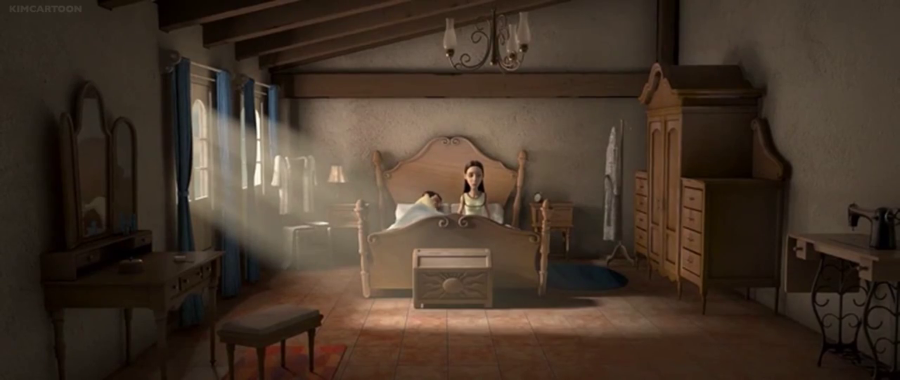
Some time later, we see Ana playing with her parents at the beach, but they reference some of the events of the movie. This is, of course, because it's all just a dream. Her mother awakens, her husband asleep next to her but no sign of Ana, real or otherwise.
Both are stirred from bed by a noisy commotion up on the roof, however, as their newly adopted son, Daniel, is getting into goofy trouble again.
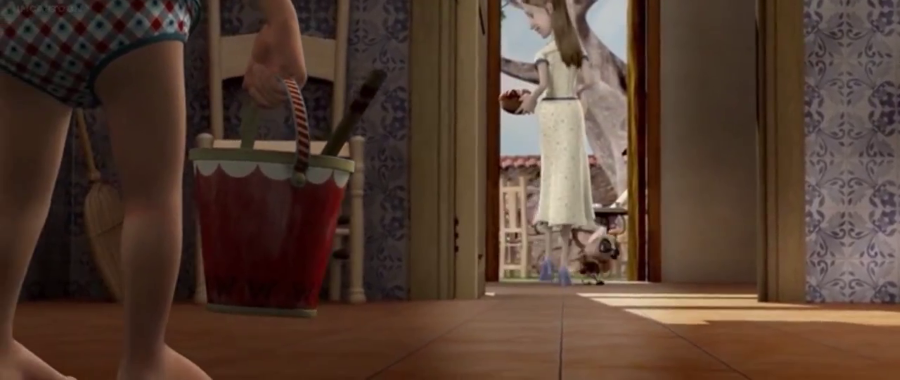
As the three begin another happier, healthier new day together, a familiar figure watches over them, which Carmen notices, just out the corner of her eye, with a little smile. The memory of Ana keeps a safe distance, but she'll always be there, in the background of her mother's life, keeping a happier memory of her little girl alive.
MONSTER ANALYSIS: FIGMENTS
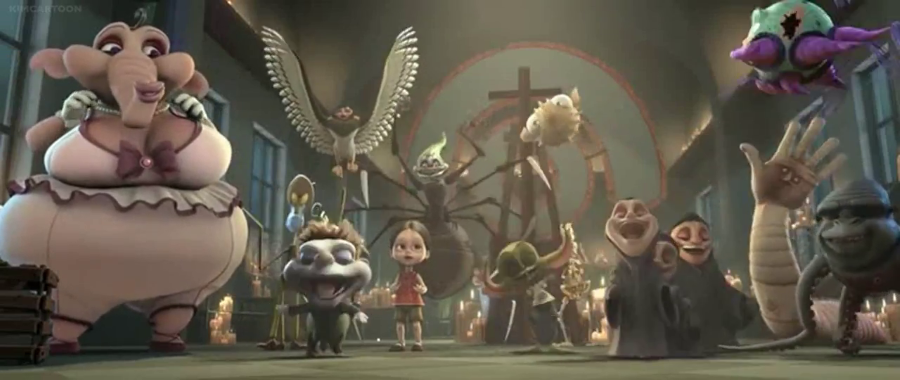
So maybe this review series wound up skewing disproportionately towards "psychic" forces, from entities that wield or prey upon the mind to entities that may in fact exist strictly in the imaginations of their victims, but we
are minds, aren't we? There's still a lot about our mental selves we don't fully understand, and things that can tamper with that tend to really scare us. It's kind of unavoidable that so many "abstract" monsters would lurk in the mnemonic realm.
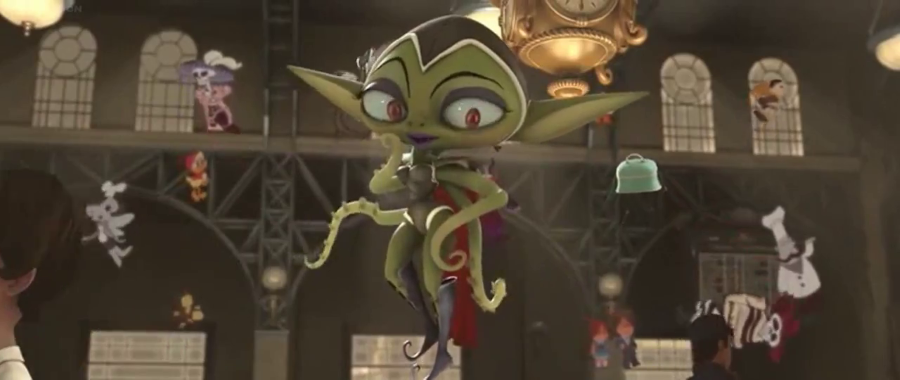
Unusually for these tropes, the majority of "figments" are more or less benign, and their creators are never a threat to anybody either. Not once are the neurodivergent framed as the source of horror in this film, except perhaps that final irony that the barbaric physician was unaware of his own hallucinations. We see that these beings range from annoyances so subtle they go totally unnoticed, to a truly terrifying monstrosity that drives its victim, Carmen, to erratic and violent behavior, but still the "true villain" is the prejudice and fear with which the patients are treated.
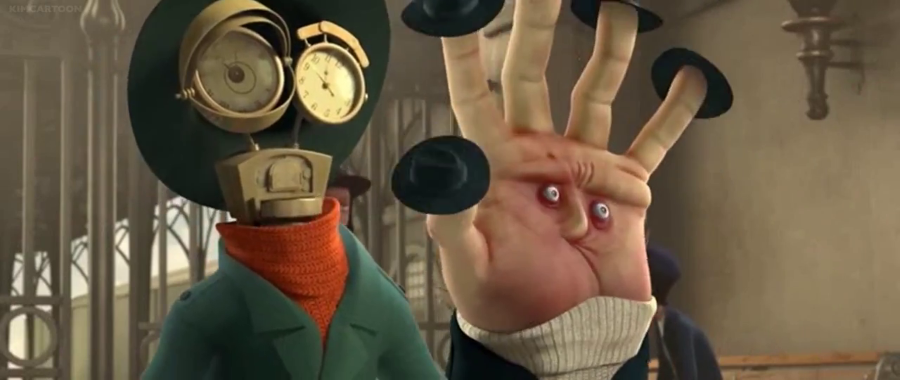
The flexibility of the setting's rules is interesting. Some people are able to see and interact with all figments, some can perceive only their own, everyone is capable of "hearing" figments in their sleep, all figments can interact with one another, and they can interact on a very, very limited basis with inanimate matter. It seems to be easier for them to affect objects relevant to their own meaning, as Tick is shown twice to be capable of adjusting the hands of real clocks (hilariously after a little "forgive me, brother.")
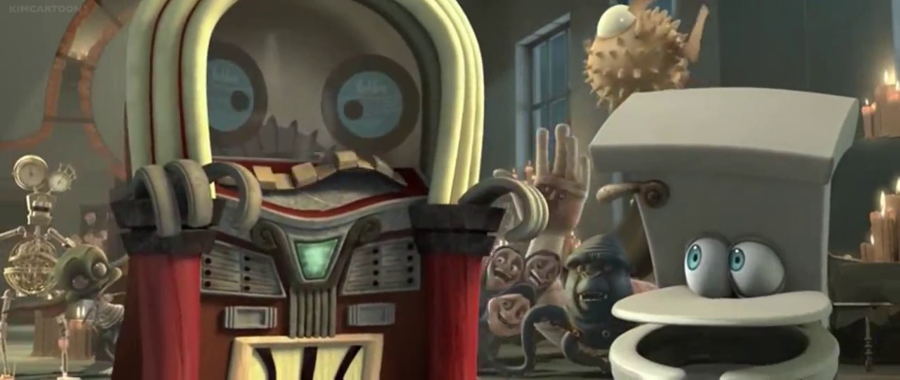
Figments can also range in how harmful or helpful they are; even Bruno suggests that Ana's existence is a coping mechanism that probably helped her mother grieve. It's honestly amazing that this film tackles mental illness with more nuance than almost any bigger-budget, more "adult" media, acknowledging that neurological disorders can be a serious threat to people, but aren't always an absolute evil and are really just an unavoidable fact of life. How many times have you seen a "mental institution" as the setting of an entire film and not a single
patient ever contextualized as something frightening? It's a tragedy that the film was a box office bomb in its own country, ripped apart by critics for being too strange or too dark for its target audience and dooming it to a life of long-term obscurity. It does so many things so well, it has such an original and compelling plot, it defies many conventions of both its horror tropes and children's animation, and it's a passion project the director work on for at least ten years. It truly deserves wider recognition, and not as some "b-movie" oddity for youtubers to snark at, either.
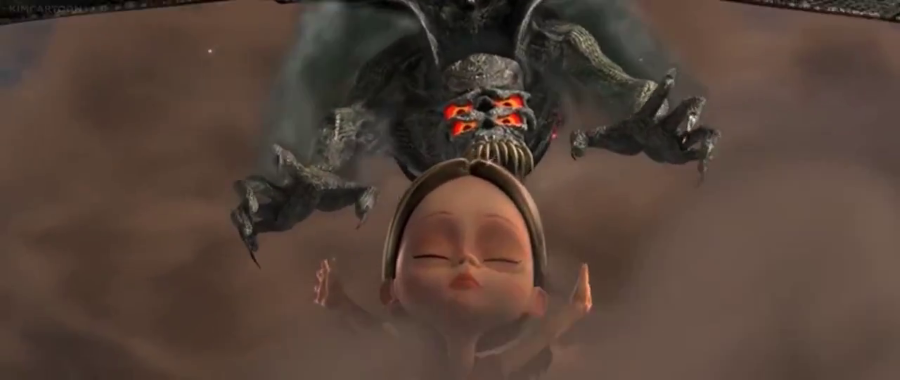
"Ana" herself is also technically one of our "creatures," and the thrust of her character is
incredible. It's easy to forget that she truly
isn't that little dead girl, has never met her, and cannot possibly have any of her memories; that she is built entirely from her mother's memory of the original and manifested only as a shield from the terrible truth. But unfortunately, she comes as a package deal with the buried memory of that real child's death, which conversely exists to keep torturing and terrorizing the same person "Ana" exists to love and protect. It isn't that these two beings are even necessarily a Good and Evil dichotomy, but that both of them are technically unhealthy trauma responses, one of which must give up everything she cares about to stop that cycle of pain.
The "monsters" in this movie may not be conceptually stranger than any others we've looked at this month, but how many times have abstract creatures manifested from the human psyche as basically the
heroes? Ana and Bruno is essentially
Toy Story meets
The Babadook, but it goes places more heartfelt than the former and, unbelievably, darker than the latter.
NAVIGATION:
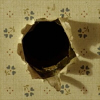
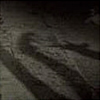
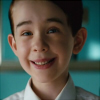
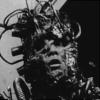
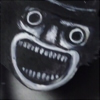
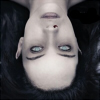
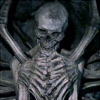
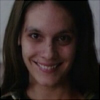
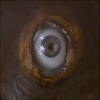

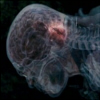
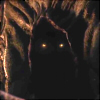
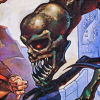
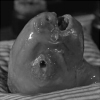
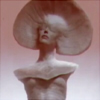
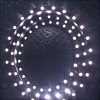

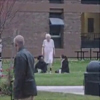
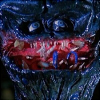
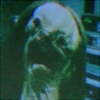
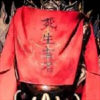
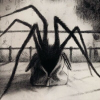
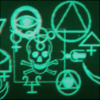
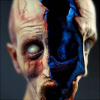
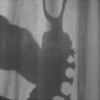

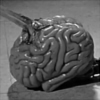
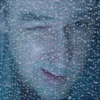

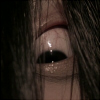
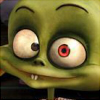
WAYS YOU CAN SUPPORT THIS SITE!
